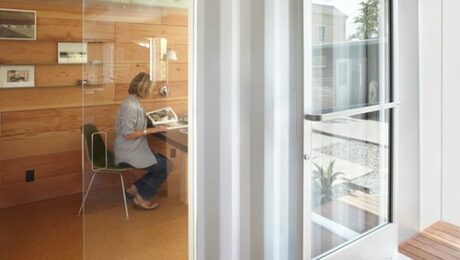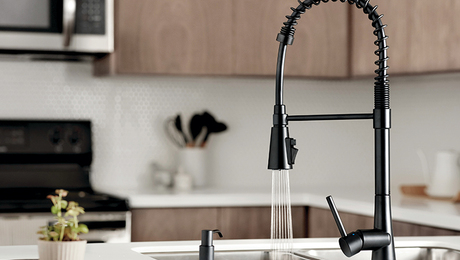To Vent or Not to Vent a Low-Slope Roof
Long time reader first time question asker. I’ve really benefited a lot from reading these forums! I’m working in climate zone 5.
Here’s the question. Design calls for a low slope roof with a roof deck above. I’ve read up a lot on this type of assembly (in this forum and elsewhere) and have done my best at mitigating some of the common issues, but can’t help shake the feeling that I’m scoring a bit of an own goal with the way I’m going about this. I understand that a thick layer of closed cell foam on the underside of the deck is a successful approach.
So, the insulation at the 2×12 roof joists will be closed cell to mitigate moisture issues coming from below. Then there will be 2x sleepers to achieve the slope before the roof decking proper and membrane. My question is what to do with the space between these sleepers. My thought is to drill a few holes through the curb to provide some modicum of venting to the cavity between the roofing membrane and the closed cell foam (moisture that get’s in this space won’t dry in on account of the closed cell, and it won’t dry out on account of the membrane) – these holes would lead to the space behind the vertically oriented corrugated metal siding (a siding material that makes it’s own rain gap!) and would be fairly well protected from bulk water entry. Alternatively, I suppose the cavity spaces could be filled with insulation (rigid board would be safest, I would think). Lastly, go back to the drawing board and just slope the joists to eliminate the need for sleepers (although for project specific reasons, I would like to avoid this).
GBA Detail Library
A collection of one thousand construction details organized by climate and house part










Replies
I set the sleepers directly on the joist. There is no need for the extra OSB in between. The SPF than goes party across the sleepers and partly across the joists. Make sure to put a cover board under the roof membrane so that it can be easily replaced without damaging the roof deck down the road.
When it comes to SPF roofs like yours, you get much better performance with I-joists. The narrow web of the I-joist significantly reduces thermal bridging, you get much more assembly R value out of the SPF. The improved assembly performance also lets you comply on U factor basis which in most cases requires around ~R38 SPF for a bit of extra cost save.
Super helpful - thank you. How are you typically laterally bracing the sleepers? Just throw in some bridging and/or hurricane ties?
K Dunn,
I agree with Akos advice.
You will get no appreciable ventilation from drilling holes in those joists. The majority of the drying would still be through diffusion.
I would consider making the deck and tapered sleepers as modules so that they could be periodically removed for any required maintenance, and to clear accumulated debris.
Or you might also consider mounting the decking panels (or pavers) on adjustable pedestals, rather than sleepers. http://ecoarbordesigns.com/inventory/details/6/pedestal_supports.html
One more vote for "the extra layer doesn't help you". You would need a lot more than a few holes to allow for any appreciable amount of ventilation/drying to take place.
Regarding the roof deck itself, I would add to Malcolm's suggestion to make the structure modular by recommending that you make the decking in sections of not more than about 4 feet square, and make each of these "deck panels" removeable -- make them set onto the joists with a few fasteners to secure the corners. This will make the deck easy to temporarily remove for roof maintenance work. There are a lot of roof decks in Baltimore where I frequently visit friends, and some of the roofs are in rough shape because they are difficult to maintain.
It may be simpler to do a commercial style membrane flat roof under the deck instead of the pitched roof. Regarding insulating that roof, 12" filled with closed cell is some serious insulation. You can probably save some money, and likely end up with a slightly better performing roof, by using closed cell on the underside of the sheathing in a thick enough layer for moisture control in your climate zone, then filling the remainder of the cavities with open cell spray foam.
Bill
Thanks all,
I really appreciate the replies here - getting rid of the extra layer is a no brainer, and the other tweaks make a lot of sense (definitely will include some sort of maintenance provisions on the deck, and will likely only do closed cell right on the underside of the deck).
You can also build a low slope roof using polyiso. Since you are in zone 5, I think you would need a 6” base of polyiso on the cold edge with 12” of dense pack below to get your required minimum exterior/total r-value ratios. The big roofing supply houses, like ABC and Allied, can design this for you, including the slope and add things like crickets if you need them. The polyiso can be mechanically adhered and then the coverboard and membrane can both be glued. I have also done this with the slope built into the rafters. Frankly it is a lot easier and quicker to place a sloped piece of polyiso on the exterior than to cut the slope into each joist.
You can then add the roof deck using the pedestals that Malcom linked to. I should note that the pedestals are not cheap (but neither is lumber nowadays). I was originally planning on using the 2’x2’ wood panels on top of the pedestals, but I have had a couple of them sitting around outside for a few years and I don’t like the way they have weathered. I am leaning towards using porcelain tiles on the pedestals instead – assuming I ever get around to it. I just bought an indoor/outdoor carpet to place on top of the membrane and that might be the permanent solution for me.
> the cavity between the roofing membrane and the closed cell foam
IRC 806 specifies "directly under" because cavities cause moisture problems. In addition, the cavity has a poor perm ratio. So ventilate it per IRC specs.
Structurally, I don't think you can omit sheathing directly attached to joists.
+1 on using some type of standard roof design with a deck built over it.
What a great online community this is. Thanks to the two Jon's for the above advice - it seems to gel with this very helpful article from JLC on the matter (https://www.jlconline.com/how-to/exteriors/decks-over-roofs_o)
Here's where I'm at now (from the bottom up):
2x12 joists w/ batts in cavity (and probably just a little bit of closed cell under the sheathing to help w/ air sealing)
Roof sheathing attached to joists
Sloped Polyiso mechanically adhered (goodbye sleepers)
Coverboard and membrane directly adhered
Then it'll be client's choice on the roof deck to do either sloped sleepers w/ a wood deck (making provisions for maintenance) or a pedestal system w/ porcelain tiles.
Glad to help and thanks for the link. I love that tile look. I have a glass railing on mine and I think tiles will look really sharp with it.
I offer a simpler option. I've designed many houses in the SW where we include view decks above the flat roofs. My preferred option is to install open web trusses with 1/4"-1/2" slope and dedicated duct chase, so I can install a duct system to blow air down on the rooms below.
I would insulate with 4" R20 min. rigid foam on top of the roof decking, covered with TPO, then I would install a deck on top (no venting worries). Under the roof decking, I would use 8" R30 min. ocSPF, if the trusses are too tall, or cavity blown cellulose.
Armando what would you reccomend to insulate my vented gambrel roof. I already had roof done two years ago no exterior insulation..